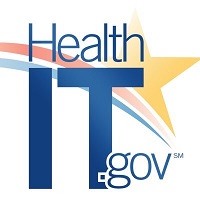 By Jeff Smith, Tony Myers and Papia Paul, ONC
By Jeff Smith, Tony Myers and Papia Paul, ONC
Twitter: @ONC_HealthIT
It’s going to be a busy year – a really busy year. In 2022, much of the promise of the 21st Century Cures Act comes to certified health IT near you.
ONC dutifully monitors industry progress towards certification to the 2015 Edition Cures Update (Cures Update), which introduces new standards and functionalities that will benefit our health care system in a variety of ways. This includes improved interoperability through secure, standards-based application programming interfaces (APIs) and the United States Core Data for Interoperability Version 1 (USCDI v1); enhanced patient safety with a new e-prescribing standard; and support for other Department of Health and Human Services (HHS) programs, such as CMS’s Promoting Interoperability Programs.
Upcoming Milestone
Under ONC’s final rules, health IT developers of certified health IT (certified health IT developers) whose products are certified to the applicable criteria are required to provide these new functionalities to their customers by December 31, 2022. And so far, while the industry has gotten a start, a lot of certification action will happen in the coming months:
Progress of Certification to the 2015 Edition Cures Update Criteria to be Available by December 31, 2022
Data Source: Certified Health IT Product List (CHPL). Percentages represent the certified health IT modules (i.e., product versions) compliant to a 2015 Edition Cures Update criterion to date as a proportion of the overall number of modules required to be compliant to that criterion (n) by December 31, 2022. Note the CHPL data is based on currently active certified health IT modules required to update.
Developers are making steady progress with the new privacy and security certification criteria. These require transparency attestations indicating whether a certified health IT developer supports encrypting authentication credentials and multi-factor authentication. Additionally, we see a small, but promising uptick in the use of more granular security tags to restrict redisclosure of sensitive information at the data entry level. While these are attestations and voluntary updates, we view these trends as industry responding to and taking seriously the opportunities to improve privacy and security through certification criteria.
Standardized APIs and USCDI
There are several other important Cures Update certification criteria where considerable progress will need to occur throughout the year to meet the December 31, 2022 deadline, including the new standardized FHIR API for patient and population services. Standardized FHIR APIs will facilitate interoperability across certified health IT developers and clinical settings, serving as a foundation for innovation and supporting the development of new and innovative software applications. An ecosystem of APIs, underpinned by specific FHIR standards, will help ensure that health care providers, health insurers, public health agencies, accountable care organizations, and other health care entities can access and use patient data in new ways to manage their patients’ health and care. And standards-based APIs will help patients more easily connect to different sources of their own health data, enabling them to aggregate their information into a singular view or use different apps to understand their health.
Beyond APIs, the 2015 Edition Cures Update requires certified health IT developers whose products are certified to several different certification criteria to incorporate USCDI v1 data elements into their health IT. In the context of ONC certification, USCDI v1 represents the minimum set of data that health IT certified to certain certification criteria is required to support for data access and exchange. Health IT previously certified to several different certification criteria needs to be updated to conform with USCDI v1 by December 31, 2022. Moreover, as a maintenance of certification requirement (45 CFR 170.404(b)(2)(ii)), certified health IT developers must provide these USCDI v1 updated capabilities to their customers by December 31, 2022, so we expect testing and certification to ramp up and occur in the coming months for many health IT developers.
Moving Forward
Again, it’s important to note the ONC Cures Act Final Rule and the extension of compliance dates and timeframes require certified health IT developers to upgrade certain aspects of their certified health IT and provide their upgraded certified health IT to their customers by December 31, 2022.
We are thrilled to see several policy initiatives come to fruition in 2022 and are optimistic that this year will be an important milestone in our interoperability journey.
For additional information and resources on the benefits of the 2015 Edition Cures Update, check out a recently published Cures Update fact sheet [PDF – 405 KB]. We encourage all stakeholders to familiarize themselves with the details provided in this fact sheet, and we welcome questions through the ONC Health IT Feedback and Inquiry Portal.
This article was originally published on the Health IT Buzz and is syndicated here with permission.

